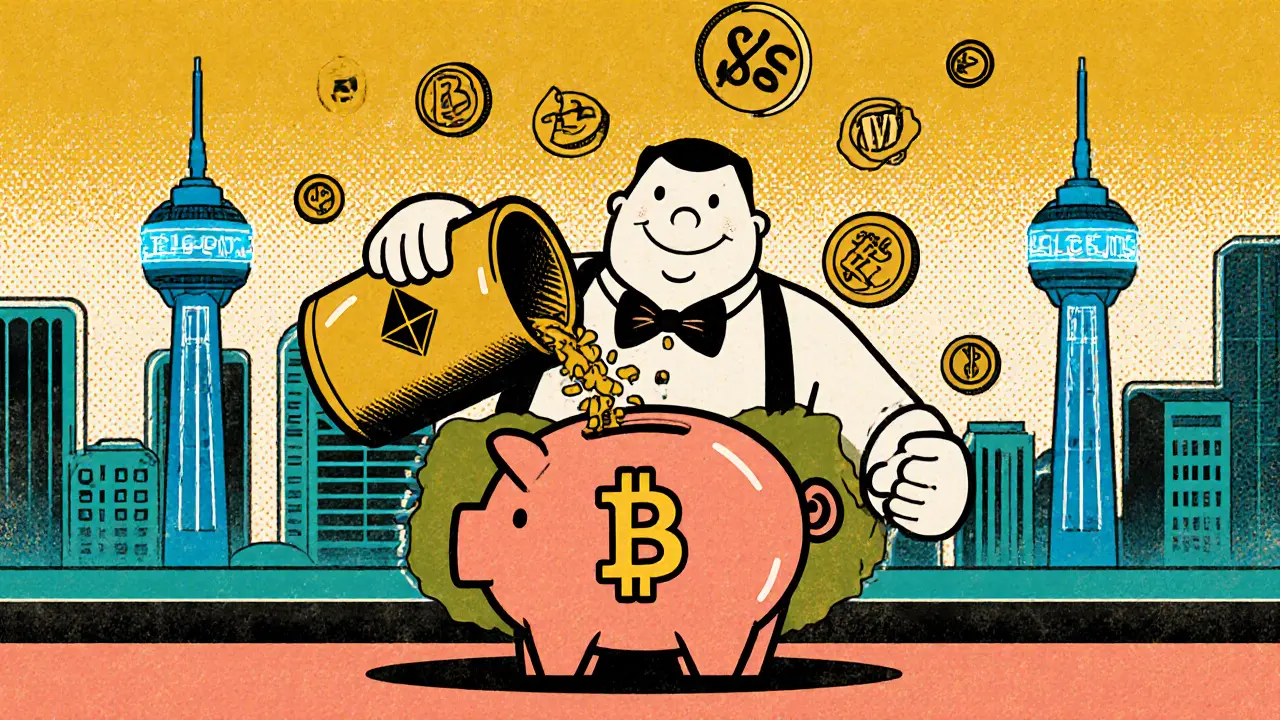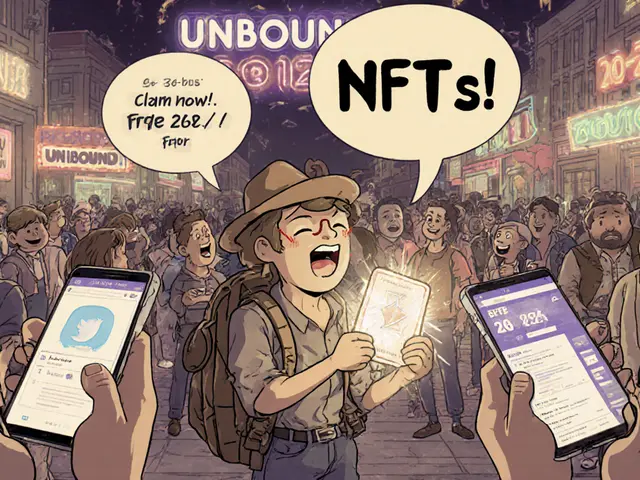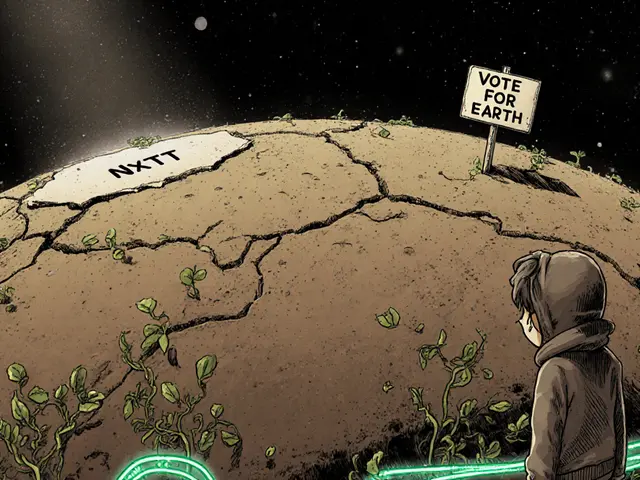
Uniswap v3 on Blast Yield Calculator
Input Parameters
Your Potential Earnings
Uniswap v3 on Blast isn’t just another version of the popular crypto exchange-it’s a strategic move to solve one of the biggest problems in DeFi: cost. If you’ve ever tried swapping tokens on Ethereum and got hit with $50 in gas fees, you know why this matters. Uniswap v3 on Blast launched in 2024 as a lightweight, yield-focused version of the protocol built specifically for the Blast Layer 2 network. It’s not trying to replace Uniswap on Ethereum. It’s trying to make trading cheaper, faster, and more rewarding-for both traders and liquidity providers.
What Makes Uniswap v3 on Blast Different?
At its core, Uniswap v3 on Blast keeps the same simple interface you’re used to: connect your wallet, pick a token, swap. But underneath, it’s built differently. Unlike the main Ethereum chain, Blast doesn’t just reduce fees-it gives you a share of the network’s native yield. That means when you provide liquidity on Uniswap v3 on Blast, you’re not just earning trading fees-you’re also earning interest from Blast’s built-in staking rewards. It’s like getting paid twice for the same job.
The platform currently supports just two native tokens: ETH and WBTC. That’s it. Four trading pairs total: ETH/WBTC, ETH/USDbC, WBTC/USDbC, and ETH/BLAST. It’s not a full exchange. It’s a focused tool. If you’re looking to trade Solana, XRP, or Dogecoin, you won’t find them here. But if you’re holding ETH or WBTC and want to move them efficiently while earning extra yield, this is one of the best places to do it right now.
How Trading Works on Uniswap v3 (Blast)
Trading on Uniswap v3 on Blast works exactly like it does on other Uniswap versions. You open your wallet-MetaMask, Rabby, or any EVM-compatible one-and connect it to the interface. You pick the token you want to sell, the one you want to buy, and click swap. No order books. No market makers. No intermediaries. The trade happens through a liquidity pool, and the price is set automatically by an algorithm.
The big upgrade from Uniswap v2 is concentrated liquidity. In v3, you don’t spread your funds across the entire price range. You pick a specific price band-say, between $3,000 and $3,500 for ETH-and put all your capital there. If the price stays in that range, your liquidity earns more fees. If it moves outside, your funds stop earning until it comes back. It’s more complex, but it’s also more efficient. On Blast, this feature works even better because the lower gas costs mean you can adjust your price ranges more often without breaking the bank.
Transaction fees are still 0.30% per trade, same as standard Uniswap v3. But because Blast’s gas fees average under $0.05 per swap, you’re not paying extra just to use the platform. On Ethereum mainnet, a simple swap might cost you $2-$5 in gas. On Blast? You’re looking at $0.01-$0.03. That’s not a tweak-it’s a revolution for small traders.
Liquidity Provision: Earn More Than Just Fees
If you’re thinking about adding liquidity, this is where Uniswap v3 on Blast really shines. On Ethereum, liquidity providers earn only the 0.30% trading fees. On Blast, they earn those fees plus a share of the network’s yield. Blast distributes ETH rewards to stakers and liquidity providers based on how much they lock up. This isn’t a side feature-it’s baked into the protocol.
As of late 2025, liquidity providers on Blast are seeing annual yields between 5% and 12% on top of trading fees, depending on the pair and market conditions. For ETH/USDbC, the combined yield is often around 8-10%. That’s higher than most centralized exchange savings accounts and beats most DeFi protocols on Ethereum. The catch? You need to understand impermanent loss. If ETH’s price swings wildly, your share of the pool can lose value compared to just holding the tokens. But on Blast, the extra yield often offsets that risk.
Unlike centralized exchanges, you never give up control of your funds. Your liquidity stays in your wallet. The protocol just uses it to facilitate trades. There’s no KYC. No withdrawal limits. No platform risk-except the risk of smart contract bugs. But Uniswap’s code has been battle-tested for years. The Blast integration is new, but the core is solid.

Performance and Liquidity Compared to Other DEXs
Uniswap v3 on Blast isn’t the biggest DEX. Not even close. It ranks in the 58th percentile for trading volume among all decentralized exchanges. That means it’s bigger than 58% of them, but smaller than 42%. The daily volume hovers around $15-$25 million, compared to $1-$2 billion across all Uniswap deployments.
Why the gap? Because it’s new. And because it only supports two tokens. But its liquidity efficiency is impressive. The average bid-ask spread is 0.68%, which is tight for a new pool. That means less slippage for traders. On Ethereum, you’d need $100 million in liquidity to get a spread this narrow. On Blast, you get it with $5 million. That’s because Blast attracts concentrated capital from yield seekers.
Compare that to Uniswap v3 on Arbitrum or Polygon. Those networks have hundreds of trading pairs and higher volumes. But they don’t offer native yield. If you’re only trading ETH and WBTC, Blast gives you more return for the same risk. If you want to trade altcoins, stick with Polygon or Arbitrum.
Who Is This For? Who Should Avoid It?
Uniswap v3 on Blast is perfect for:
- ETH or WBTC holders who want to earn yield without staking on L1
- Traders who do small, frequent swaps and hate high gas fees
- Liquidity providers looking for higher APY than Ethereum-based pools
- DeFi users already on Blast and looking to maximize returns
It’s not for:
- People who want to trade Solana, Bitcoin, or non-EVM tokens
- Those who need customer support or KYC-compliant services
- Traders who want margin, futures, or leverage
- Beginners who don’t understand impermanent loss or gas fees
If you’re new to DeFi, start with a simple swap on Uniswap v3 on Polygon. Learn how liquidity pools work. Then come back to Blast. The yield is tempting, but it’s not a free lunch.
How to Get Started
Here’s how to use Uniswap v3 on Blast in five steps:
- Install MetaMask or another EVM wallet.
- Add the Blast network to your wallet using the chain ID and RPC URL (available on blast.io).
- Get some ETH or WBTC. You can buy it on Coinbase, transfer from another chain, or use MoonPay (2.55% fee) to buy with a credit card.
- Go to app.uniswap.org and switch to the Blast network in your wallet.
- Connect your wallet, pick a pair, and swap or add liquidity.
You’ll see your yield automatically reflected in your wallet. No extra steps. No claiming. It’s all compounded in real time.

Limitations and Risks
There’s no escaping the fact that this is still early-stage DeFi. Blast is a new network. Its security hasn’t been tested in a bear market. While the Uniswap code is solid, the integration layer is new. There’s always a risk of exploits or bugs.
Also, there’s no fiat on-ramp built into the platform. You can’t buy crypto directly with a bank card on Uniswap v3 on Blast. You need to get your assets from somewhere else first. And if you need help? There’s no live chat. No phone number. Just the community Discord and documentation.
Regulation? None. Uniswap v3 on Blast operates in the same gray area as all decentralized protocols. No SEC oversight. No insurance. If you lose your private key, your funds are gone. That’s the trade-off for control.
The Bigger Picture: Why Blast Matters
Uniswap v3 on Blast isn’t just a new exchange. It’s a sign of where DeFi is headed. Layer 2s aren’t just about scaling-they’re about earning. Blast’s yield model is being copied by other chains. Soon, every major L2 will offer native rewards for liquidity providers.
Uniswap’s broader ecosystem is already massive. V4 launched in early 2025 and hit $100 billion in volume in under six months. But v3 on Blast is the quiet standout-small, focused, and quietly profitable. It doesn’t need millions of users. It just needs the right ones: people who understand yield, hate fees, and want to keep control.
As of late 2025, over 85,000 unique wallets have interacted with Uniswap v3 on Blast. That’s not a lot compared to Ethereum, but it’s growing fast. And for those users, the returns are real.
Final Verdict
Uniswap v3 on Blast isn’t for everyone. But if you’re holding ETH or WBTC and want to trade them cheaply while earning extra yield, it’s one of the smartest moves in DeFi right now. It’s not flashy. It doesn’t have hundreds of tokens. But it does what it promises: lower fees, higher returns, full control. And in DeFi, that’s more than enough.
Try it with a small amount first. See how the yield adds up. Watch how the price ranges affect your position. Learn the risks. Then scale. This isn’t a get-rich-quick scheme. It’s a better way to use your crypto-and that’s worth something.





Comments (25)
Kirsten McCallum
Yield farming is just capitalism with a blockchain beard.
They call it 'earnings'-it's rent extraction with a whitepaper.
Henry Gómez Lascarro
Let me break this down for the 17 people who think this is revolutionary. Blast isn't a Layer 2-it's a yield Ponzi dressed up as DeFi. The 'native yield'? It's printed by a team that hasn't even audited their own staking contract. You're not earning interest-you're being paid in future promises from a chain with 85k wallets and zero institutional backing. And let's not forget: Uniswap v3 on Blast only supports ETH and WBTC because they're too lazy to integrate anything else. Meanwhile, Arbitrum has 300+ tokens, $2B daily volume, and zero forced yield traps. This isn't innovation-it's a bait-and-switch for people who don't know the difference between APY and a meme coin pump. If you're not staking on Ethereum mainnet, you're not serious. You're just chasing the next flash-in-the-pan 'yield farm' that'll evaporate when the next bear market hits. And don't even get me started on impermanent loss. You think 12% APY offsets a 40% drop in ETH? Wake up. This isn't finance. It's casino math with a gas fee discount.
Will Barnwell
So basically it's Uniswap but cheaper and with extra yield? Cool. I'll try it with $50. But why does everyone act like this is new? We had this on Polygon last year. And now it's 'revolutionary' because Blast slapped on staking rewards? Lmao.
Lawrence rajini
This is 🔥🔥🔥 finally someone built something that actually works for small traders!
No more $5 gas fees just to swap 0.1 ETH
Yield on top of fees?? YES PLEASE
Been waiting for this for years 🙌🙌
Matt Zara
I get why people are hyped, but let’s be real-this isn’t for everyone. If you’re just starting out, stick to Polygon or even Base. Blast’s yield looks sweet, but if you don’t understand concentrated liquidity or impermanent loss, you’ll get burned. I’ve seen too many new users dump $500 into a pool, panic when ETH dips 8%, and pull out at a loss. The yield isn’t free money-it’s a trade-off. But for those who know what they’re doing? This is one of the cleanest DeFi experiences out there right now.
Jean Manel
85k wallets? That’s less than a single Binance listing. This isn’t a protocol-it’s a beta test for degens who think 'low gas' = 'safe'. And 'native yield'? Sounds like a rug pull waiting to happen. No audits, no insurance, no support. Just a Discord link and a prayer.
William P. Barrett
What’s interesting here isn’t the tech-it’s the philosophy. Blast isn’t trying to be the biggest. It’s trying to be the most efficient. It’s a quiet rejection of the 'more tokens, more volume' arms race. Instead, it says: focus on what matters-yield, cost, control. And maybe, just maybe, that’s the future of DeFi: not mass adoption, but deep adoption. The few who understand it, use it, and stick with it.
Cory Munoz
I’ve been using this for 3 months now. Just swapped 0.2 ETH for USDbC yesterday-gas was $0.02. Yield accrued automatically. No drama.
It’s simple. It’s quiet. It works.
That’s more than I can say for half the DeFi apps out there.
Jasmine Neo
Blast? More like Blatant. This is what happens when American crypto bros think 'yield' means 'free money' and ignore the fact that no one outside the US cares about this. You're not building a chain-you're building a tax haven for degens. And now you're pretending it's innovation? The SEC will eat this alive. And when it collapses, you'll be the ones screaming 'it's not a scam!' while your wallet is empty.
Ron Murphy
Volume is low, but liquidity efficiency is high-that’s the real story. On Ethereum, you need $100M to get a 0.68% spread. Here? $5M. That’s a structural advantage. Doesn’t mean it’s safe. But it’s clever.
Prateek Kumar Mondal
This is good for people who want to earn while trading
No need to stake separately
Simple interface
Low fees
Just do it with small amount first
Nick Cooney
You say 'no KYC' like it's a feature. It's a bug. You're trading on a platform that can't be held accountable. That's not freedom-it's negligence. And if you think 'battle-tested code' means 'safe', you've never read the exploit logs from 2023. This isn't DeFi. It's a trust exercise with math.
Clarice Coelho Marlière Arruda
so i tried it and my wallet just showed up with like 0.003 eth extra?? i didnt even claim it?? is this real or did i just hallucinate from too much coffee
Brian Collett
Anyone else notice how the yield spikes when ETH dips? That’s not coincidence. It’s a feedback loop. When prices fall, LPs get scared and pull out, so the protocol boosts rewards to keep them in. Smart. Or sneaky?
Allison Andrews
It’s fascinating how this protocol reduces complexity to its essentials. No altcoins. No leverage. No gimmicks. Just ETH, WBTC, and yield. It’s like DeFi stripped down to its bones. Most projects overcomplicate. This one… it just works.
Wayne Overton
You’re all missing the point. Blast is a front for a centralized entity. The yield comes from their treasury. They’re just using your capital to fund their own ops. You’re not earning yield-you’re lending to a private company that calls itself a 'chain'.
Alisa Rosner
Just wanted to say: if you’re new to this, start with 0.05 ETH. Watch how the yield adds up over a week. It’s not magic-it’s math. And the interface? So easy. I showed my mom and she did a swap. 😊❤️
MICHELLE SANTOYO
This is the end of DeFi as we know it.
They’re turning liquidity into a bank account.
And the banks? They’re watching.
Soon, every chain will be a yield farm.
And then? We’ll all be serfs in a blockchain feudal system.
Just saying.
Lena Novikova
Why are you all acting like this is the first time someone did yield on L2? We had this on Optimism in 2022. Blast just copied it and slapped a new logo on it. The fact that you’re amazed says more about you than the tech.
Olav Hans-Ols
I’ve been on Blast for 4 months now. Not a single issue. Gas is always under $0.05. Yield is steady. No drama. Just quiet, consistent returns. If you’re tired of the noise, this is your place.
Kevin Johnston
Low fees + yield = best combo in DeFi right now 🚀
Dr. Monica Ellis-Blied
While the technical implementation is sound, the ethical implications of incentivizing liquidity with native yield deserve serious scrutiny. This model creates a structural dependency on speculative capital inflows. Without continuous new entrants, the yield mechanism collapses. That is not sustainable finance-it is a temporal arbitrage disguised as innovation. Proceed with extreme caution, and always assume the protocol’s incentives are misaligned with your long-term interests.
Herbert Ruiz
85k wallets? That’s less than a small NFT collection. This isn’t adoption. It’s a sandbox for insiders.
Saurav Deshpande
Blast is a trap. The yield is funded by future investors. The 'native staking rewards'? They’re just printing tokens from a private key. The team controls the mint. They’re not building a chain-they’re building a Ponzi with a whitepaper and a Discord server. Wait until the next bear market. Then you’ll see who’s really holding the bag.
Kirsten McCallum
You're right. It's not innovation. It's rent-seeking.
But at least it's honest rent.